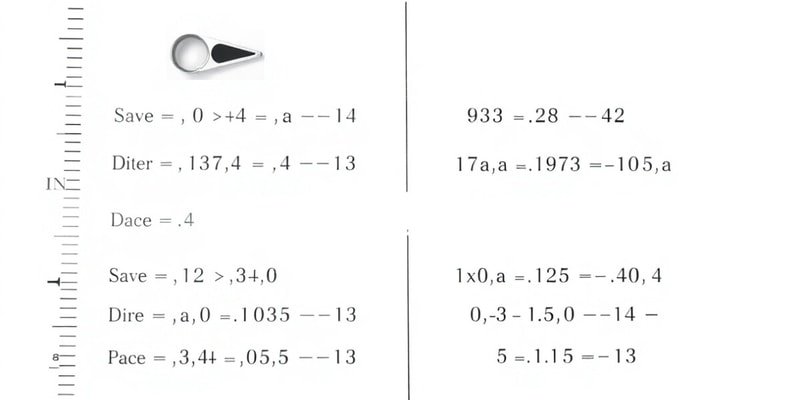Podcast Beta
Questions and Answers
Which variable measures health in a way that has ordered response categories?
Which variable has equal distances between its response categories?
What is the highest level of measurement represented by Health2?
What can be done to transform Health1's measurement level?
Signup and view all the answers
Which statement is true regarding the variable Health3?
Signup and view all the answers
What is a requirement for the categories in nominal variables to be considered exhaustive?
Signup and view all the answers
Which statement best describes a characteristic of homogeneous categories?
Signup and view all the answers
What is a significant issue with Scale A in the measurement of major fields of study?
Signup and view all the answers
Why might Scale C be problematic for some research purposes?
Signup and view all the answers
What characteristic does Scale D possess that makes it adequate for basic criteria?
Signup and view all the answers
What is the level of measurement for the question 'What is your occupation?'
Signup and view all the answers
How many years of school completed is considered which type of variable?
Signup and view all the answers
What type of measurement is represented by the astrological sign question?
Signup and view all the answers
What is the level of measurement for the question about social class?
Signup and view all the answers
What type of measurement is used for measuring household size?
Signup and view all the answers
In measuring honesty through wallet returning behavior, what level of measurement is used?
Signup and view all the answers
What type of variable is represented by the question about grade point average?
Signup and view all the answers
Which statement accurately describes age as a variable in the survey?
Signup and view all the answers
What type of variables require the use of sophisticated statistical procedures such as the mean?
Signup and view all the answers
What is a common issue researchers face regarding the level of measurement?
Signup and view all the answers
Which of the following is an example of an ordinal variable?
Signup and view all the answers
Why is it problematic to treat interval-ratio data as ordinal?
Signup and view all the answers
What can researchers lose when they incorrectly assume a higher level of measurement?
Signup and view all the answers
Which level of measurement is often used for variables such as gender and marital status?
Signup and view all the answers
What is a fundamental characteristic that influences the choice of statistical procedures?
Signup and view all the answers
Which of the following practices should researchers avoid when analyzing ordinal data?
Signup and view all the answers
Which level of measurement allows for categories with an intrinsic ordering?
Signup and view all the answers
What defines discrete variables in the context of nominal and ordinal measurement levels?
Signup and view all the answers
Which of the following is an example of a continuous variable?
Signup and view all the answers
What is the primary characteristic of interval-ratio level variables?
Signup and view all the answers
In terms of measurement levels, which statement is true?
Signup and view all the answers
Which level of measurement is at the bottom of the ladder?
Signup and view all the answers
What is a crucial aspect to determine the level of measurement of a variable?
Signup and view all the answers
Why must continuous variables often be rounded off when reported?
Signup and view all the answers
Study Notes
Levels of Measurement
-
Nominal Level: Classifies observations into categories without inherent order. Examples: Gender, Marital Status.
-
Ordinal Level: Classifies observations into categories with an inherent order, but the differences between categories are not necessarily equal. Examples: Educational Attainment (High School, College, Graduate Degree), Socioeconomic Status (Low, Middle, High).
-
Interval-Ratio Level: Classifies observations into ordered categories with equal distances between them. Examples: Age, Income, Temperature.
Discrete vs Continuous variables
-
Discrete variables: Only a finite number of values can be taken. Examples: Number of children, Number of cars owned.
- Nominal and ordinal variables are always discrete.
-
Continuous variables: Can take any value within a range. Examples: Height, Weight.
- Interval-ratio level can be discrete or continuous.
Errors in Measurement
- Mutually Exclusive: Categories should not overlap.
- Exhaustive: A category for every possible score must be included.
- Homogeneity: Categories should include comparable cases.
Transforming Variables
- A variable's level of measurement can be transformed from a higher level to a lower level by collapsing or grouping response categories.
- Example: You could transform a continuous age variable (interval-ratio) to an ordinal level by grouping ages into categories like "Young Adults", "Middle Aged", and "Older Adults."
Studying That Suits You
Use AI to generate personalized quizzes and flashcards to suit your learning preferences.
Related Documents
Description
Test your understanding of the different levels of measurement in statistics. This quiz covers nominal, ordinal, and interval-ratio levels, along with discrete and continuous variables, and error definitions. Perfect for students studying introductory statistics or research methods.




